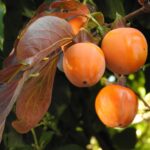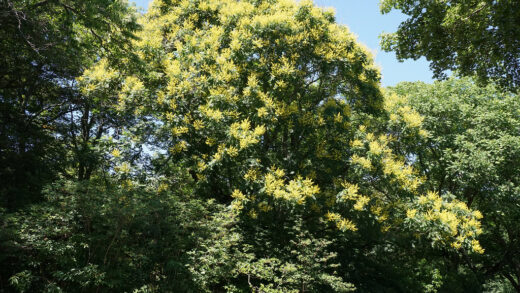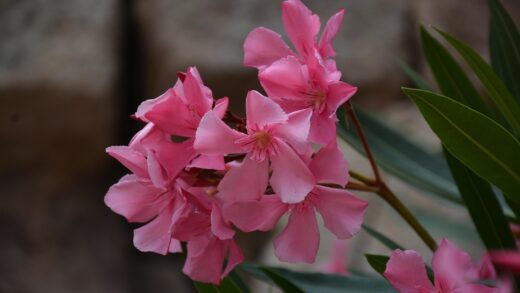Celery, this deservedly popular yet challenging vegetable for many, can be a true gem in any kitchen garden. The secret to successful cultivation lies in careful planning and a thorough understanding of the plant’s needs, as its long growing season and specific requirements demand special attention from sowing to harvest. Whether it is celeriac, whose fleshy root is consumed, blanching or stalk celery with its crunchy petioles, or leaf celery with its aromatic leaves, the basic principles of cultivation are common. Selecting the right variety and providing expert care will bear fruit, rewarding you with a versatile vegetable with a characterful flavour that is second to none.
The ideal soil for celery is deep, nutrient-rich, well-draining, yet capable of retaining moisture. It particularly appreciates a high organic matter content, so it is advisable to incorporate plenty of mature compost or well-decomposed manure into the soil during preparation. The soil structure should be loose and friable so that the celeriac root can develop unhindered, and the root system of stalk celery can penetrate deep for water and nutrients. The optimal pH is slightly acidic to neutral, ranging between 6.0 and 7.0. Soils that are too heavy and clayey or very loose and sandy are less favourable for it.
The plant’s light and heat requirements are also decisive when choosing a growing location. Celery clearly prefers a sunny spot; at least six to eight hours of direct sunlight per day are essential for an abundant harvest and the development of intense flavours. Although it is considered a cool-season crop, it is extremely sensitive to frost, especially in its seedling stage, while summer heat and drought also take their toll. Providing a balanced temperature during the growing season is key to successful cultivation. Strong temperature fluctuations, especially during the seedling-raising period, can predispose the plant to bolting later on.
Adhering to crop rotation is also of utmost importance for celery to prevent soil-borne diseases and pests. It is important not to plant it in an area where plants from the Apiaceae family, such as carrots, parsley, parsnips, or dill, have grown in previous years. Establishing good neighbourly relations can also be beneficial; celery thrives in the company of cabbages, onions, garlic, and legumes, for example. These plants can not only keep some pests at bay but also help celery’s development with their positive effects on soil life.
The tricks of sowing seeds and raising seedlings
Due to celery’s extremely long growing season, raising seedlings is almost unavoidable under local climatic conditions to ensure a successful and abundant harvest. It is worth starting sowing well before the frosts have passed, typically at the end of February or the beginning of March, so that we have sufficiently developed, strong seedlings by the time of planting out in mid-to-late May. This means we need to count back about 10-12 weeks from the planned planting date. This timing ensures that the plants have enough time to form bulbs or stalks by the end of the season, avoiding premature bolting, which can be triggered by a cold spell.
More articles on this topic
Celery seeds are extremely small and require light for germination, which necessitates a special sowing technique. Sow the seeds in seed trays or pots filled with high-quality, loose-structured seedling mix. Gently firm and moisten the soil, then sprinkle the seeds on the surface. Do not cover them with soil; at most, you can sift a very thin layer of vermiculite or fine sand over them to retain moisture while allowing light to pass through. After sowing, gently moisten the surface with a sprayer so that the seeds do not wash away.
During germination, the most critical factors are ensuring continuously high humidity and a stable, warm temperature. Cover the seed tray with a transparent plastic lid or film to create a mini-greenhouse. The optimal germination temperature is between 21-24°C, so it is advisable to place the pots on a warm, bright windowsill or in a heated room. The germination process is slow and requires patience, usually taking 14-21 days, so do not be discouraged if you do not see results immediately.
When the small seedlings have developed their first few true leaves, it is time to prick them out. Carefully lift the plantlets, avoiding damage to the roots, and transplant them individually into larger pots or soil blocks. This step is essential for the seedlings to strengthen and develop a sufficiently robust root system before planting out. And in the one to two weeks before planting out, do not forget to harden off the seedlings, that is, to gradually acclimate them to outdoor conditions, which prevents transplant shock and ensures the plants’ smooth continued development.
Transplanting and care during the growing season
The properly prepared and hardened-off seedlings should be transplanted when the danger of the last spring frosts has definitively passed, which is usually the period from mid-to-late May. Choose an overcast day or the late afternoon for transplanting so that the scorching sun does not damage the young plants. Proper spacing is crucial: plant celeriac at about a 40×40 cm spacing, and stalk celery slightly closer, at 30×30 cm. The most important rule is not to plant the seedlings deeper than they were in their nursery pots; the growing point, the heart-leaf, must remain above the soil surface.
More articles on this topic
Celery is a thirsty plant, and one of the cornerstones of its successful cultivation during the growing season is a continuous and abundant water supply. Never let its soil dry out completely, as water deficiency results in fibrous, hard, bitter-tasting stalks and a smaller bulb. Deep, soaking irrigation less frequently is more ideal than frequent, shallow watering. Mulching is essential to retain soil moisture and suppress weeds. Spread a 5-7 cm thick layer of straw, grass clippings, or compost around the plants, which also helps regulate soil temperature.
Since celery is a particularly nutrient-demanding, or as gardeners say, “greedy” plant, regular nutrient replenishment is essential for proper development. Start fertilizing a few weeks after transplanting and repeat every 3-4 weeks throughout the season. Use a balanced organic or mineral fertilizer rich in nitrogen and potassium. Mature compost or manure piled around the base of the plants mid-season also provides an excellent source of nutrients. It is sensitive to boron deficiency, indicated by internal cracking of the stalks, which can be remedied with a boron-containing foliar fertilizer if necessary.
In the case of stalk celery, a special procedure called blanching can increase the quality of the stalks, making them softer and less bitter. This should be started 2-3 weeks before harvest. The easiest method is to gradually hill up soil around the base of the plants, but you can also use collars made of black plastic, cardboard, or milk cartons tied around the stalks. The point is to block the stalks from light, which stops chlorophyll production, causing the stalks to turn white and their taste to become milder and more delicate. This step is, of course, omitted for celeriac.
Harvest, storage, and possibilities for vegetative propagation
The time of harvest depends on the type of celery and the cultivation goal. Stalk celery can be harvested when the outer stalks reach the desired size and thickness but are still tender and crisp; this usually lasts from late summer until the first serious frosts. You can either harvest entire heads at once by cutting them above the root system, or continuously by breaking off the outer stalks, allowing the inner, younger parts to continue developing. Celeriac is harvested before the first frosts, typically from late September to early November, when the bulb reaches a diameter of at least 7-10 centimetres. Use a garden fork to carefully lift the plant from the ground, taking care not to damage the bulb.
Storing freshly harvested celery also requires care. Stalk celery can be kept for a relatively short time, one to two weeks, in the vegetable crisper of the refrigerator, preferably wrapped in a plastic bag or a damp kitchen towel to maintain its freshness. Celeriac can be stored for a much longer period. After harvesting, remove the leaves and most of the root system, but do not wash the bulb. In a cool, dark, high-humidity place, such as a cellar or root cellar, layered in damp sand or peat, it can last until spring without losing its quality.
A lesser-known but extremely simple and spectacular method of celery propagation is vegetative propagation, or regrowing. For this, all you need is the base of a store-bought or home-grown stalk of celery, that is, the cut bottom part near the roots. Place this piece of about 5-7 cm in a shallow dish with one or two centimetres of water. Within a few days, new, tiny leaves and roots will begin to sprout from the centre of the base. When the root system is sufficiently developed, the small plant can be transplanted into a pot or into the garden to continue growing.
Those who are truly dedicated can also try saving their own celery seeds, which, however, requires patience. Celery is a biennial plant, meaning it develops its edible bulb or stalks in the first year and only produces flowers and seeds in the second year. For this, the selected, most beautiful plant or plants must be overwintered in a frost-free place and then replanted in the garden in the spring. The plant will bolt, produce flowers, and the ripened seeds can be collected for the next year’s sowing, thus closing the cultivation cycle and ensuring the preservation of your own tried-and-tested variety.




















